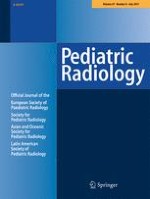Erschienen in:

03.05.2017 | Pictorial Essay
Neonatal imaging using an on-site small footprint MR scanner
verfasst von:
Stephanie L. Merhar, Jean A. Tkach, Jason C. Woods, Andrew P. South, Emily L. Wiland, Mantosh S. Rattan, Charles L. Dumoulin, Beth M. Kline-Fath
Erschienen in:
Pediatric Radiology
|
Ausgabe 8/2017
Einloggen, um Zugang zu erhalten
Abstract
With its soft-tissue definition, multiplanar capabilities and advanced imaging techniques, magnetic resonance imaging (MRI) for neonatal care can provide better understanding of pathology, allowing for improved care and counseling to families. However, MR imaging in neonates is often difficult due to patient instability and the complex support necessary for survival. In our institution, we have installed a small footprint magnet in the neonatal intensive care unit (NICU) to minimize patient risks and provide the ability to perform MR imaging safely in this population. With this system, we have been able to provide more information with regard to central nervous system disorders, abdominal pathology, and pulmonary and airway abnormalities, and have performed postmortem imaging as an alternative or supplement to pathological autopsy. In our experience, an MR scanner situated within the NICU has allowed for safer and more expedited imaging of this vulnerable population.